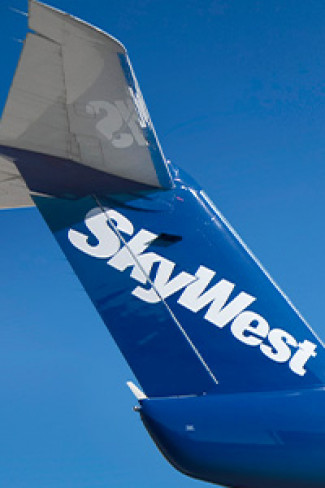Airline Pilot Retirement Plans | Part 1
As we are all aware, airline pilot retirement plans are changing because of unprecedented attack on our retirements over the last twenty years.
One of the great challenge for unions representing pilots in the coming years will be to rethink our retirement arrangements in light of these developments. This article will give a brief explanation of pensions, with an overview of B plans.
Types of retirement plans
Retirement plans come in two types: defined benefit plans, often referred to as "A Plans" in the airline industry,and defined contribution plans, often referred to as "B Plans."
Defined benefits plans are the traditional kind of retirement plans.When you retire you receive an income stream for the remainder of your life. As the name implies, the benefit is what you earn. The plan sponsor, the company, must contribute however much is required to fund that benefit. Another way of saying this is that the airline takes all of the investment risk with defined benefit plans.
Defined contribution plans are the other kind of retirement plan. The contribution, the money put into the plan by the company, is what is defined with these plans. The success or failure of the investments that are purchased with the contributions will determine the amount of the benefit. The employee takes all the investment risk with these plans. 401k plans are an example of defined contribution plans. Airline B plans are also defined contribution plans. Their proper name is Money Purchase Pension Plans, or MPPP.
We can also divide plans into qualified and non-qualified plans. Qualified in this context means qualified under the federal tax code. Defined benefit plans and defined contribution plans such as 401k plans and MPPPs are all examples of qualified plans.
Qualified plans receive favorable treatment and additional protections under the tax code. For example, qualified plans are protected against the claims of creditors of a corporation in a bankruptcy filing. However, since they receive favorable tax treatment under the federal tax code, Congress places limits on the amount of funds that can be placed into qualified plans.
Non-qualified plans are less desirable than qualified plans because of their less desirable tax treatment and lower level of protection. Highly paid executives who have already hit the limits of their qualified plans are the primary recipients of non-qualified plans.
Plan designers generally try to maximize the qualified plans before turning to non-qualified plans. Non-qualified plans are typically used to catch the spill over of funds that can not be put into qualified plans. Pilot retirement plans today are almost all qualified plans, though many contain provisions to fund non-qualified plans if government limits are exceeded. For example, Congress could lower the allowable pension limits. In such an instance we would want to capture those funds with a non-qualified plan.
Defined Contribution Plans (B plans)
Let's start with defined contribution plans. They are the easiest to understand. In a MPPP (B plan) or a 401k plan the company puts money into the plan based on some formula. Typically it is a percentage of your salary (in the case of the MPPP) or a percentage of your contribution (in the case of a 401k plan) with a company match. The pilot is given certain investment options to invest the funds in and when reaching retirement he can roll those funds over into an IRA or purchase an annuity with the funds.
The great advantage of this type of plan is that money is fully vested and fully funded as soon as it is deposited in the account. Unlike defined benefit plans, no pilot has had a dollar lost in a defined contribution plan during an airline bankruptcy.
There are also disadvantages. The government limits the amount of money that can be contributed to DC plans. The tax code is filled with different limits on pension contributions, but you should be familiar with two of them. The first is that you can contribute no more than $45,000 to all Defined Contribution (DC) plans combined in the current calendar year (2007). The second is that no contribution can be based on a salary in excess of $225,000. These limits are adjusted for inflation through the tax code, usually on a yearly basis.
For example, in our current contract at UPS we were able to negotiate a 12% contribution on all wages up to the government limit. On this year's limit of $225,000, 12% yields a contribution of $27,000. Most captains have W-2's exceeding $225,000, but they cannot count those excess wages above $225,000. In addition, the pilot can contribute $15,500 in 2007 to his 401k plan (we do not have a 401k match in our contract). If we add the $15,500 and the $27,000 we have a total of $42,500-- just under the $45,000 limit allowed under the law. By the way, the extra $5,000 to the 401k plan that can be contributed by those age 50 and older does not count against the $45,000 limit.
My experience in talking to pilots is that they tend to seriously overestimate the degree of financial success they are likely to obtain. I have had more than one pilot tell me that they can obtain 25% or 30% per year in their investment returns. It is possible that we might have returns like this in any one-year, but returns like this are almost impossible to achieve over the long run. Peter Lynch did about 29% per year in 13 years at the Magellan fund. Warren Buffet had a similar run in some of his early partnerships over a similar time span, but as time goes on we live through up and down markets. Over long time frames returns tend to revert to the mean.
For example, Sir John Templeton, another one of our modern investment titans, did a little over 13% per year over a 50 year period in his growth fund beating the S&P 500 by about 2% per year. Let me suggest that if you can obtain anything beyond 10% to 12% per year on consistent long-term basis that you are wasting your time piloting aircraft. Riches beyond your dreams await a person with your skills on Wall Street.Anything more than 10% per year over the long term is probably a pipe dream. 8% per year is probably more realistic. Remember most professional investment managers do not beat the stock market averages.Also many folks ignore the effects that future inflation will have on their retirement income. If you figure that inflation will average 3% per year and you are earning 8% your real return is only 5% per year.
A friend of mine who recently retired began his career at Continental at a very young age in the early 70's. At that time a top captain made $40,000 per year. A nice car cost $3,000. A very nice home was $40,000. That top captain could have retired on $28,000 per year. That was great in the early years of his retirement, but as inflation kicked in through the 70's retirement undoubtedly became much harder. Don't be surprised if that quarter-pounder at Mickey D's will be going for $15.00 plus before your retirement is over.
The other area where pilots tend to overestimate their financial success is in managing the withdrawals from their retirement accounts. Many have told me that they expect to be able to withdraw 7%, 8% or even 10% per year from their accounts. There has been a lot of good financial analysis done on this and it is the widely held opinion of finance professors and financial professionals that anything more than about 4% is imprudent and puts you at serious risk of outliving your money.
At 4% per year a diversified mix of stocks and bonds should allow you to live 30 to 35 years in retirement with periodic increase to adjust for the effects of inflation. In other words, every million dollars you acquire in your savings prior to retirement will yield $40k per year in retirement. That is a sobering figure.
We have had a DC plan at our airline since 1988. The percentage of total pay has varied between 8% and 12% and the wages have grown considerably since our early years. What have we learned by observing the results in the real world?
Well first off, we don't have any Warren Buffet replacement candidates. We have had a few folks who have done very well for short periods of time, but have failed to sustain those returns for long periods. It should be pointed out that our B Plan and 401k allows participants to invest in individual stocks and bonds as well as mutual funds and will even allow the purchase of options under certain limited circumstances. We have always tried to give our members the widest range of investment choices and greatest investment freedom possible.
We have had a large number of folks who have done average or a little better. By the way average is pretty good. As was pointed out above most investment professionals do not "beat" the averages. On the other hand, we have had quite a few who do considerably worse. Why?
Well, I have observed many try to time the market. They move from money market funds to stocks in an attempt catch investment swings. Almost no one can do that. Some have taken extraordinary risks and achieved extraordinary returns for a while. Eventually, double zero comes up on the investment roulette wheel and things end badly. A few are overly conservative. They hang out in money market funds or intermediate bond funds rather than take a risk. They seem befuddled and uncomfortable by investing. All of these investment faults will tend to depress group averages.
Another objection I hear from pilots is that because of their demanding schedules, crossing time zones flying on the backside of the clock that their lives will be shortened reducing their retirement needs. While it certainly is true that circadian disruption is a negative factor when determining longevity, pilots tend to have many factors that work to increase longevity. Compared to the general population pilots tend to have higher education levels, smoke less, eat better, have a lower body mass index and higher rates of marriage. These are all factors that favor increased longevity. You should plan on living a long while after retirement. If you make it to 60 over half of you will make it to 80 and a considerable number will live into your 90's.
The other thing that I hear quite a bit especially from younger pilots is "Just give me the money and I'll take care of my own retirement". Well, that sounds good but the fact is that it is very difficult to acquire and build wealth from ordinary income that is subject to federal and state income taxes. While one may have good intentions the fact is that most people do not save that much outside of their 401k and IRAs in real life. In fact, when one is paying a marginal tax rate of 30% or higher plus on one's income, it is very difficult for most people to acquire substantial wealth outside of their qualified retirement plans
Pilots have an investment style that reflects their innate personality traits, aggressiveness, self-reliance, optimism, competitiveness, and independence. DC plans appeal to those of us who want to be in control of our lives, and we all want to believe that we are better than average. We are not, but thinking we are we often over estimate the likelihood of our investment success.
Many years of experience with B Plans have convinced me that DC plans will be an important part of the pilot retirement mix in the future, but because of government limitations on how much money can be contributed to them and the reality of real life investment returns, they will not by themselves be adequate to guarantee our retirement futures.
(stay tuned for Part 2...)
-

Airshare 07/22/2024
-
Alpine Air 07/18/2024
-

Atlas Air 07/17/2024
-

Piedmont Airlines 07/10/2024
-

SkyWest 07/09/2024
 AIRLINE PILOT CENTRAL
AIRLINE PILOT CENTRAL